I received an email in early August 2020 from a gentleman living in Norway, the son-in-law of Karl Victor Hagen (brother of Clara Hagen). He had read my blogs on the pre-war black market passport business in Berlin and had a bit of information which he thought might be helpful. For those who wish to get a bit of back information, four blogs are pertinent to the story of Richard Eduard Wiener:
- Overview of the Black-market Passport Business
- Josef Jakobs and the Characters involved in the Passport Business
- Ernst & Clara David – Clients of the Passport Business
- Algoth Niska and the Black Market Passport Business
We don’t know much about Richard Eduard Wiener, simply that he was one of the many German Jews who wanted to escape Nazi Germany. Through word-of-mouth, Wiener heard that a Berlin lawyer, Jürgen Ziebell was able to provide Jews with authentic Finnish passports, for a price. The truth was a bit shadier. Ziebell procured the forged Finnish passports through a Finnish bootlegger, Algoth Niska, who charged 6000 to 7000 German Marks for each passport. Ziebell likely marked up the passports even more. Through Niska, Ziebell bought Finnish passports for eight of his clients.
One of the eight passports went to Dorothea Schachtel whose story we have already uncovered. Of the seven remaining individuals, Laitinen, author of a Finnish Master’s thesis about Algoth Niska, states that none escaped from Germany. In the fall of 1938, likely after the Ziebell ring had been busted by the authorities in mid October, all seven were arrested by the Gestapo. Two of those individuals were Louis Georg & Viktoria Gertrud Hagen, whose story I covered earlier.
The remaining five passports were reserved for persons for whom there is hardly any information other than names:
- Alfred Gutmann
- Erna Levi
- Richard Eduard Wiener – according to Laitinen, Wiener’s Finnish passport was still in Ziebell’s possession when Gestapo detectives came to arrest him.
- Ernst Michel David & Clara David
I have been chipping away at this list. Ernst Michel David was relatively easy to find as his wife, Clara Hagen, was the sister of Louis Georg Hagen.
Erna Levy is still a bit of a problem, although I tend to think it might be a woman. Alas, there are at least a dozen Erna Levy/Levi in Berlin alone in 1939.
I have a few leads on Alfred Gutmann and am working on a blog post.
Which leaves us with Richard Eduard Wiener. My Norwegian contact thought that this person might be identical with a Richard Wiener who co-founded the Bankhaus Wiener, Levy & Co. in 1880 together with Carl Levy (later Hagen), the father of Louis Georg Hagen, Karl Victor Hagen and Clara Hagen. At the time of this business venture, Wiener was living in Bendlerstrasse 15, Berlin.
I am not, however, 100% sure that this is the same individual as the Richard Eduard Wiener who purchased a Finnish Passport in 1938. Given that Wiener, the financier, was likely 25-30 years old when the bank was founded in 1880, he would have been well into his 80s by the late 1930s, if he was even still alive.
But, with the help of the Mapping the Lives site, the 1939 German Minority Census and the passport business prosecution document… I have tracked down our Richard Eduard Wiener. This is his story.
Early Life
Richard Eduard Wiener was born 13 March 1876 in Berlin to parents Hermann Wiener (Kaufmann-Merchant) and Frieda (née Stern) Wiener. Richard’s parents were living at Oranienburger Strasse 66, just northwest of Alexander Platz. Hermann was born 31 October 1838 in Breslau and his wife, Frieda, was born 7 February 1848 in Heidelberg. The couple was married on 11 April 1870 in Berlin and had several children in quick succession:
- Ernst Wiener – born 11 January 1871 in Berlin
- Elsa Alice Wally/Vally Wiener – born 12 December 1872 in Berlin
- Felix Frederick Wiener – born 18 December 1873 in Berlin
- Richard Eduard Wiener – born 13 March 1876 in Berlin
- John Marcus Wiener – born 21 December 1880 in Berlin
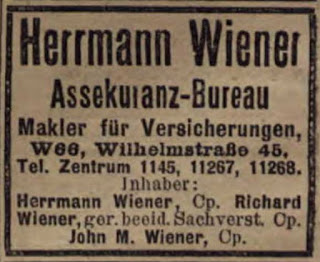
While two of the children, Ernst and Felix Frederick emigrated to the USA in the late 1800s and early 1900s, Alice, Richard and John Marcus all remained in Berlin into the 1930s. It would appear, as well, that the two remaining sons, Richard and John Marcus joined their father in his business. I found an advertisement in the 1914 Berlin address book which seems to be a good match for Hermann Wiener and his two sons, Richard and John Marcus.
Insurance Broker in Berlin
Hermann appears to have owned an insurance bureau and was an insurance broker. The company operated out of Wilhelmstrasse 45, just east of Potsdamer Platz. Listed with Hermann Wiener, Cp. are what I presume are his two sons:
- Richard Wiener, ger. beeid. Sachverst. Cp.
- John M. Wiener, Cp.
It took a bit of hunting but “ger. beeid. Sachverst.” equates to “Gerichtlich beeideter Sachverständiger” – essentially a legally sworn expert. Initially, I thought that “Cp.” might some variation of a certified insurance agent but Traugott Vitz has since suggested it might be an abbreviation of Compagnon. While a French word, it was used in German commercial lingo at the time and designated a “partner in a firm”. This make sense in the context of the Hermann Wiener firm. If this is indeed our Richard Eduard Wiener, and I am quite confident it is, then it allows us to track him with more certainty in the Berlin address books.
In the 1915 Berlin address book Hermann and his two sons have a fairly substantial listing (see below)
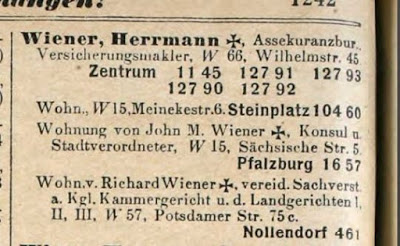
From this we learn that Hermann was living at Meinekestrasse 6, just south of Kurfürstendamm, while John Marcus was living a few blocks farther west at Sächsische Strasse 5, not all that far from where my grandfather, Josef Jakobs, was living at Pfalzburger Strasse 13. According to the 1915 listing, John Marcus was a “Konsul u. Stadtverordneter” essentially a Consul and City Councilor. As for Richard, his specialization seems even more complex. He seems to have been a “legally sworn expert at the royal chamber court and the regional courts”. Whatever it is, it sounds impressive. I had thought that the iron cross symbol behind all three names might indicate some sort of military service but no… it simply means “that the connection is listed in another place in the directory; this symbol is only intended for official purposes”.
By 1916, however, only Hermann and Richard are still associated with the insurance business which was a going concern, handling automobile as well as sports insurance. It would appear that John Marcus went his own separate way and by 1918, was running an import/export business trading in raw products. In 1918, he was still listed as a Consul and City Councillor at his home address, but his import/export business had offices at Under den Linden 56.
In 1920, Hermann Wiener passed away but Richard kept the insurance business running under his father’s name, and hired additional staff to handle business. Richard’s occupation is still listed as a “legally sworn expert at the royal chamber court and the regional courts” but his residence is now given as “Heinrich-von-Kleist-Park 2 (Nebeningang Potsdamer Str. 75c)” which is a bit perplexing for two reasons. The Kammergericht is located at Heinrich-von-Kleist-Park 2 and it is nowhere near Potsdamer Str. 75c, unless, of course the street names have changed, which is always possible.
By 1925, John Marcus may have given up the import/export business to focus solely on his other career as “Konsul d. König-reiches d. Serben, Kroaten u. Slowenen”. I take this to mean that he was a Consul to Serbia, Croatia and Slovenia. By this point, he had moved to Bismarkcstrasse 85 and his office was at Mohrenstrasse 33. But, my 1928, it would appear that John Marcus Wiener (still residing at Bismarckstrasse 85) had given up the Consul role and was now listed as “John M. Wiener & Co. G.m.b.H., Versicherungsmakler”. Apparently he followed in the family footsteps but rather than joining his brother at the old family insurance business, John Marcus started his own insurance brokerage with offices at Nollendorftstrasse 21a.
Marriage
On 21 February 1923, Richard may have travelled to Southampton aboard the SS Tyrrhenia. Perhaps he was traveling for business although in 1930, he would again travel to London, this time to wed one Walli B. Kupzok in the third quarter of 1930 in St. Martin’s registration district. Why he would get married in London is unknown. I had thought that perhaps Walli was British but another document nixes that notion.
A few months later, on 11 December 1930, Richard and Walli sailed from Hamburg aboard the SS Genua. Ports of call along the way included Malaga, Genoa, Livorno, Naples, Catania, Messinia and Palermo. One could almost think that this might have been a honeymoon for the couple. The Hamburg passenger list does offer some interesting information on the newlyweds. Walli was born 20 May 1907 in Berlin which means that she was a good 21 years younger than Richard. I have, however, been unable to find her birth registration in Berlin. It might be that “Kupzok” is a married name (from a previous marriage) or that her name and birth registration have been indexed incorrectly by Ancestry.
Rise of the Nazis
Throughout the 1930s, we can trace Richard as still residing in Berlin, still a “legally sworn insurance expert”. From 1938 to 1939, Richard was living at Kalckreuthstrasse 5 just south of the Zoological Gardens while his business was at Lützowstrasse 91a just south of the Tiergarten.
On 13 March 1939, Richard, like all German Jewish men was forced to add “Israel” to his name. This was later rescinded in 1952. Later that same year, according to the German Minority Census, Richard was listed as living at Kurfürstendamm 68 in Berlin. It may be that he had already been forced to give up his business and move residences as part of the Nazi persecution. The prosecution document I have notes that he was staying at the Pension Bayer at Kurfürstendamm 62, so perhaps 68 was also a Pension. This would also have been around the time of the Ziebell passport prosecutions. There are no other Wieners living with him, and I have been unable to find his wife Walli (Vally/Wally). There is a Wally Wiener listed as living in Berlin from the mid 1920s onwards but, given that the couple didn’t marry until 1930, it is unlikely to be her.
According to the Mapping The Lives site, Richard was a full-blooded Jew (JJJJ) and had spent two and a half years in prison as a “politischer Häftling”. At first, I thought this might be related to the passport forgeries but the 1939 German Minority Census only took place in May 1939. It may be that Richard was involved with some other political activities in the mid-1930s that earned him a prison sentence.
The public prosecutors document that I have mentions Richard and states that he was arrested by the the Gestapo on 15 October 1938 (around the same time as the other black market passport arrests) and released on 4 March 1939. He was arrested again on 17 April 1939, this time by the Public Prosecutor and released four days later on 21 April. There is no evidence of any previous arrests or prosecutions which leaves me wondering what the two and half years as a “political prisoner” might reference.
Later Years
There was one bit of good news off of the Mapping The Lives site – Richard passed away on 15 February 1954 in Berlin. I did have a look through the post-war Berlin address books and was able to pick him up in 1951 living at Schlüterstrasse 39 as an insurance expert. What became of him between 1939 and 1951 is a mystery. I have been unable to find his name in the Yad Vashem databases, so it seems unlikely that he was deported to a concentration camp. Given that he was 63 years old in 1939, it would seem unlikely that he could have withstood the horrors of the camps. On the other hand, it is possible that he escaped to either Britain or the USA, where he had relatives.
John Marcus Wiener
Unlike his brother Richard, John Marcus clearly saw the writing on the wall of Nazi Germany and escaped to England in the mid-1930s. He is listed in the 1939 UK National Register as an insurance broker, living with his wife Irene at 25 Park West in Paddington. Irene was born 17 June 1890 in Leipzig and I found a 1936 passenger list for “Irene Wiener” arriving in the UK via Madeira. Although a citizen of Germany, her last country of permanent residence was France and she intended to reside in England. This would seem to suggest that John and Irene were married prior to emigrating to the UK and that they made the move some time in the mid 1930s. While I have been unable to find a passenger list for John Marcus, I did find “exempt from internment” cards for both he and his wife from late 1939. Beyond that, all I’ve been able to suss out is that Irene passed away in 1948 in Paddington, London while John Marcus lived to the ripe old age of 89, passing away in the first quarter of 1970 in Paddington, London.
American Brothers – Ernst Wiener
As noted earlier, both Ernst and Felix Frederick Wiener emigrated to the USA in the late 1800s and early 1900s.
Ernst Wiener was the first to arrive, landing on the shores of the US in 1889 at the tender age of 18. Ernst arrived in New York aboard the Auguste Viktoria from Hamburg in October of 1889 and seized his chance to prosper in the land of opportunity. On 2 June 1904, he married Edna Lina Dreyfuss (born 29 March 1879 in New York) whose father had been born in Germany and whose mother had been born in the state of Georgia. On 3 October 1905, the couple was blessed with a daughter, Madeleine.
Two years later, the small family was living at 117 West 79th Street in Manhattan. In 1910, according to the US Census, Ernst, Edna and Madeleine were living at 50 West 79th Street in Manhattan (just east of Central Park) along with two servants. Ernst (or Ernest as he was called in the US) gave his occupation as the president of a railroad supply company. The Wiener family were the only occupants at that address so I presume it was a single family dwelling of some sort, and not an apartment building.
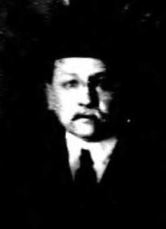
1916 passport app
Ernest was naturalized in April 1907 in New York. Three years later, in August 1910, the family arrived back in the US from Hamburg, and one can presume that they had travelled to Berlin perhaps to visit Ernest’s relatives.
Interestingly. On 11 November 1913, Ernest applied for, and received, a US passport upon which he departed for Berlin on 22 November 1913. His wife and child, Edna and Madeleine joined him a few months later, arriving in Bremen on 1 March 1914.
Ernest reapplied for a passport in 1916 at the US Embassy in Berlin and stated that he had been temporarily living in Berlin since his arrival. Ernest had to sign an Affidavit to Overcome Presumption of Expatriation. Within this affidavit, Ernest stated that he had come over to Europe as a representative of several companies, holding a contract to act as their European agent and to sell their goods on commission. Ernest specifically mentioned the Boston Pressed Metal Company of Worcester, MA, the Automated Ticket Selling Machine Company of New York and the Page Woven Wire Company of Adrian, MI. Ernest said that he was unable to do any business for them at this time (1916) and that he himself had no business connections with the US, nor owned any property there. He stated that he had a brother (Felix) living at Chester Hill, Mt. Vernon, NY and that his wife’s relatives lived in the United States. Ernest hoped to resume his activities for the companies at some point and did not know when he would return to the US.
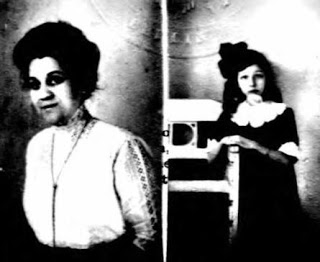
1916 passport applications
The only other records I could find detailing the family’s extended stay in Germany were a couple of passenger lists from 1931 and 1932. In 1931, Ernest and Edna departed Boulogne-sur-mer, France, aboard the SS St. Louis. They arrived in New York on 6 August and were not accompanied by their daughter. Their planned to stay at 255 West 84th Street, New York.
The following year, Ernest and Edna departed Hamburg on 3 March 1932, aboard the SS New York and arrived in New York on 11 March. The couple were again not accompanied by their daughter, who would have been 27 years old at the time. Edna and Ernest were travelling on US passports that had been issued in Berlin in 1929 and 1930. Their planned to stay with Dr. Galland at 255 West 84th Street. Both the 1931 and 1932 passenger lists gave Edna’s birth date as 29 March 1879 in New York.
As it turns out, their daughter Madeleine, had travelled to the US several times on her own, once in 1925 and once in 1926. In 1925 she arrived in New York on 19 April and was staying with Mrs. Dreyfuss (possibly a grandmother or aunt) at 102 West 75th Street, New York. The following year, Madeline travelled from Bremen to New York again, this time in June. And that is the last time we encounter Madeleine. There is no further record of her in Ancestry and it is possible that she married in Germany, the records of which would still be closed.
By 1940, Ernest and Edna seem to have settled back in the United States, residing at 122 West 76th Street in Manhattan. Ernest was a merchant in wholesale rubber goods. Two years later, within two months of each other, Ernest and Edna passed away. Ernest went first, on 1 October 1942. He had been residing at 242 West 76th Street and passed away at Lenox Hill Hospital in Manhattan. He was retired from the export/import industry. Ernest was buried on 4 October 1942 in Fresh Pond Crematory. Just over a month later, Edna passed away on 11 November 1942 in Manhattan.
American Brothers – Felix Frederick Wiener
Felix took a slightly different path to the United States although some aspects of his story mirror those of his brother Ernest. Felix appears in the 1901 UK Census staying at the Keyser Hotel Continental in Bridewell, London with an occupation of engineer. Felix then immigrated to the US aboard the SS Graf Waldersee in late December 1901 arriving in early 1902. Felix married Lucy Lea Bernays (born 25 August 1886) in November 1904. Similar to his brother, Felix was naturalized in the United States in April 1907. In 1913, Felix applied for a US passport with his wife (Lucy) and their two children:
- Frederick Bernays Wiener – born 1 June 1906 in New York
- Walter Felix Wiener – born 29 October 1907 in New York
At the time, the family was living in Mount Vernon, New York and Felix gave his occupation as importer. In 1917 and 1918, Felix registered for the US draft, although given that he was 44 years old, it would appear doubtful that he served in the US Army.
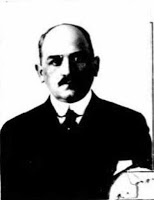
1919 US passport application
In early 1918, Felix applied for another passport this time wanting to travel to Japan upon business, specifically the sale of American Machinery. This application appears to have been delayed, perhaps by the war, and was only approved in early 1919. He did eventually travel to Japan in May 1919 and to Europe the following year.
In 1920, the family was living at 111 Sheridan Avenue in Mount Vernon. Felix gave his occupation as exporter and from the census we learn that Lucy had been born in Austria and arrived in the US in 1892. The following year (1921), Felix applied for another passport stating his intention to travel to France, Switzerland and Holland on business. His passport application was supported by a letter from Amplex Corporation which stated that Felix needed to travel abroad to conduct business which could not be arranged through correspondence. The letterhead stated that Felix was the Vice President and Manager of the corporation while Bernays (first name not visible) was the President and Treasurer. This was likely Eli Bernays, Lucy’s father, who is listed elsewhere as being the President of Amplex Corporation.
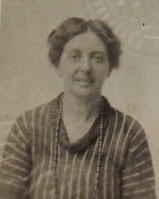
1920 US Passport application
In tracing the Bernays connection, I came across some fascinating information. Lucy was born 25 August 1886 in Vienna to Ely Bernays and Anna Freud. Freud? Yup… those Freud’s! The famous psychoanalyst, Sigmund Freud was Anna’s brother and Lucy’s uncle.
It would appear that the Felix and his wife travelled quite a bit during the 1920s, mostly to Europe but at least one trip to Shanghai, China in 1929. These travels ceased, at least for Felix, who passed away on 6 January 1930 in Manhattan at the age of 57. As for Lucy, she lived for many more years, passing away in Jamesburg, New Jersey in June 1980 at the age of 93.
As for their two sons… Frederick Bernays Wiener became a lawyer, graduating from Harvard in 1930. In 1935, while working for the Department of Justice, Frederick foresaw a war in the making. He applied for a commission in the Judge Advocate General department (Reserve) of the US Army. He received a Captain’s commission and while his work colleagues thought he was a bit crazy to join the army, his foresight paid off. When the US entered the Second World War, Frederick’s former colleagues were digging trenches in Basic Training while he was already Field Grade Officer conducting court martial. Frederick retired from the US Army in 1966 with the rank of Colonel. He passed away in 1996 in Phoenix, Arizona at the ripe old age of 90.
Walter Felix Wiener graduated from Amherst College and apparently worked with his uncle, Edward Louis Bernays (the “father of public relations”) for several years. Walter and his brother married their wives in a double ceremony in New York in 1933. Frederick married Esther Green while Walter married Frances Emely Farnham. In the 1940 US Census, Walter was listed as a Manager of Public Relations. He apparently served as Chief of Public Information for the Office of Contract Settlement during the war, part of the Office of War Mobilization and Reconversion. Walter passed away in 2000 in North Carolina at the age of 93.
Richard’s Sister – Alice (née Wiener) Pels
Up until this point, we have had stories with relatively happy endings. Some members of the Wiener family settled in the UK while others immigrated to the United States, long before the shadow of Nazism crept across Europe. Even Richard Eduard Wiener managed to survive the war and the Shoah. We are left, however, with one last story, a much grimmer one – the story of Alice Wiener and her family.
Elsa Alice Wally/Vally Wiener was born 12 December 1872 in Berlin, the sole daughter of Hermann Wiener and Frieda Stern. Sandwiched between two of her brothers, Ernst born 1871 and Felix born 1873, Alice may have been the pampered princess of the family. In 1892, Alice married Henry Pels in Berlin. The couple had two children:
- Rudolf Victor Pels – born 1893
- Johanna Elizabeth Pels – born 04 April 1895 in Hamburg
The period around the First World War brought both joy and tragedy to the Pels family. In March 1914, Johanna married Fritz Jakob Heine, a physician. A few years later, on 5 May 1917, Rudolf Victor died during the war, presumably as a soldier (a marginal note on his birth registration says “gefallen”).
In 1925, Henry and Alice returned to Germany from a visit to New York, perhaps visiting Alice’s brothers, Felix and Ernest. In a few short years, Felix would pass away in 1930 and his sister Alice would not be far behind. She passed away on 2 November 1931 in Berlin of natural causes/old age. Given that she was only 59 years old, she didn’t seem to inherit the Wiener longevity genes which allowed some of her relatives to live well into their 90s. Her husband, Henry, also passed away that same year.
Which leaves Alice’s daughter, Johanna. Beyond her marriage to Fritz Jakob Heine (born 1884), I haven’t been able to find any further information, other than her final fate. On 17 May 1939, Johanna was living at Eichenallee 3 in Charlottenburg with her husband. On 24 October 1941, both Johanna and Fritz were deported to Litzmannstadt (Łódź) Ghetto. There is no further record of Johanna and it can be presumed that she either perished in the ghetto or, when the ghetto was liquidated in 1944, was transported to an extermination camp, either Auschwitz or Chelmno.. As for Fritz, he was deported to Kulmhof (Chelmno) extermination camp on 3 July 1944 where he likely perished.
There is, however, one ray of brightness in the sad story of Alice (née Wiener) Pels – a son who survived. Hans-Joachim Heine was born 18 January 1915 and in 1938 went to the USA as an engineer to visit his great uncle, Ernest Wiener. Hans Joachim gave the name of his father in Berlin as a contact in Germany and had been to the USA in 1935 and earlier in 1938. In 1939, Hans-Joachim applied for naturalisation in the US giving his occupation as “mechanical engineer and composer”. He married one Therese Liselotte Barbara Bergfeld, also born in Berlin in 1915, and by 1950, the couple had twin daughters, Barbara (still alive in 2020) and Marguerite (deceased 1996). Perhaps Alice and Henry cobbled together their resources to send their son abroad, away from the Nazi menace.
Conclusion
I’ve been sucked down a fairly deep Wiener rabbit hole and in coming back to the heart of this story, I am still left wondering how Richard Eduard Wiener survived the Shoah while his niece (Alice) and her husband did not. Did he manage to join his brother Ernest in the USA, as did his nephew Hans Joachim Heine? Or did Richard join his youngest brother John Marcus in England? Hard to know. Suffice to say, it is unlikely that the forged Finnish passports arranged by Niska would have have aided him in any way. As we know from other stories, the forged Finnish passports often brought Jewish refugees to the attention of the authorities in other European countries.
Sources
Ancestry – genealogical records
Mapping the Lives – 1939 German Minority Census
YadVashem – Central Database of Shoah Victim’s Names
Google Books – An Oral History of Frederick Bernays Wiener
